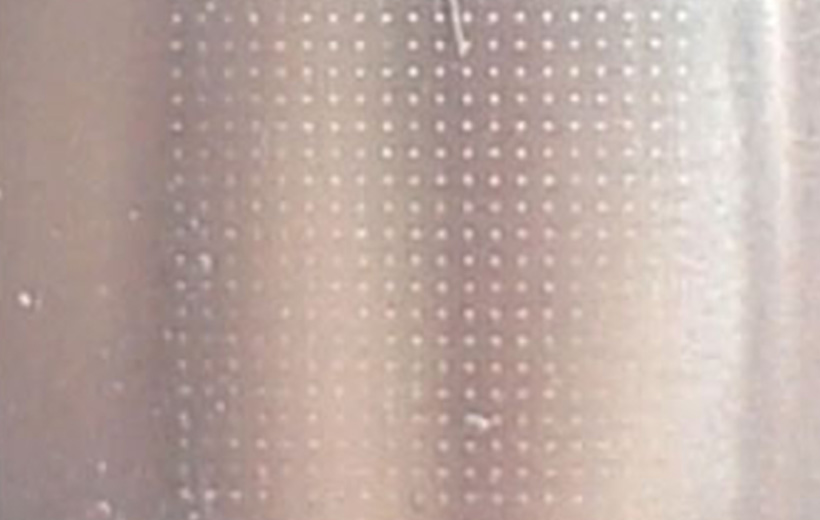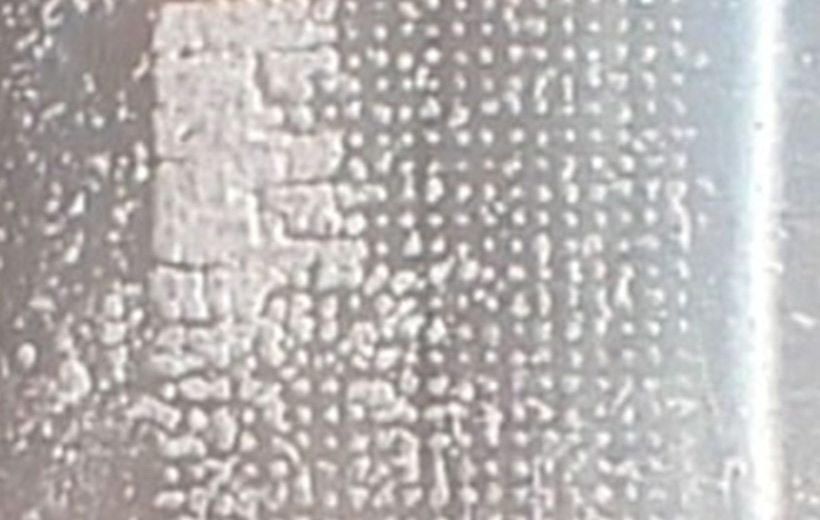Poor swarf evacuation will make swarf stop in the drilled hole and any space between the PCB and
entry board.
*Pictures of the exit side of some entry board

Non swarf clogging

Swarf clogging
| Cause | Failure condition | Countermeasure |
|---|---|---|
| Small chip pocket (flute volume) | Poor chip evacuation causes clogging. | Enlarge chip pocket volume, change web thickness, web taper, and flute land ratio. |
| Short flute length | Poor chip evacuation at near the end of flute causes clogging. | Apply suitable flute length for stack height. |
| Small helix angle | Poor chip evacuation in flute causes clogging. | Higher helix angle. |
| Cause | Failure condition | Countermeasure |
|---|---|---|
| High chipload | High Infeed rate does not allow the chip to evacuate properly | Lower chipload. |
| Penetrating too deep into the backup board | Materials such as Backing Board generate large particles of swarf which can adhere to the drill causing Swarf clogging. | Set suitable penetration depth. |
| No dwell time between drilling strokes | Swarf clogging occurs because the drill has not completed the evacuation process. | Use dwell time. |
| Cause | Failure condition | Countermeasure |
|---|---|---|
| Hinge number and thickness of PCB copper layers | Spiral copper chips prevent good chip evacuation | Higher chipload |
| Cause | Failure condition | Countermeasure |
|---|---|---|
| Unsuitable bush diameter (entry board lifts) | The chip/swarf penetrates the gap between the top board and the entry board | Control spindle run out (maintenance and repair). Recommended value <10 micron (<5 micron is better for <0.3mm drill bits) |
| Unsuitable vacuum force | Both a low vacuum force and an excessive vacuum force worsen chip evacuation. | Set suitable vacuum force. (Recommended value: 0.4dia. 100-150 hPa, 0.1dia. 70-140 hPa) Maintain dust catcher system of the drilling machine. |
PRODUCT 01 PCB Drills / Routers / Ultra precision micro-hole drill